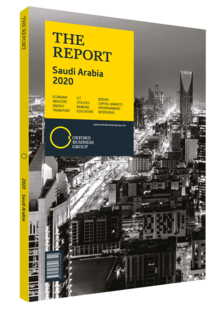Tareq Al Sadhan, CEO, Riyad Bank: Interview

Interview: Tareq Al Sadhan
How are digitalisation and financial technology (fintech) positively disrupting retail banking?
TAREQ AL SADHAN: Digital banking in general and fintech in particular are evolving from traditional banking channels, leveraging big data and smart technologies to provide customers with fast and secure financial services. This digital transformation increased competition in the banking sector and encouraged financial institutions to come up with creative solutions to enhance customers’ banking experiences and reduce the need to visit physical branches. An important pillar of the sector’s development has been the Saudi Arabian Monetary Authority (SAMA) sandbox for financial institutions and fintech players. It is a programme which aims to reduce the use of cash by providing safe electronic payment channels. The government’s efforts to spread the use of digital payments have shown results; we have seen a significant growth in customers’ trust in digital payments. The entire economic ecosystem will benefit from the inevitable transition. Due to the reliability of digital tracing systems, faster and more secure methods of digital payment are generally associated with increased consumer spending and stronger economies.
In which ways can the banking industry leverage new technologies such as artificial intelligence?
AL SADHAN: Banking and financial institutions in Saudi Arabia started to invest in artificial intelligence primarily to improve engagement and relationships with customers. For example, chatbots, integrated with other software, can effectively communicate with clients. Trust in digital payment systems is also encouraged through advanced technological innovations like customer identification tools and complex security software, introduced in smartphones and digital wallets. One key goal inspired by Vision 2030 is for Saudi Arabia to become a 70% cashless society by end of 2030. Because of this ambitious target, the Kingdom is now intensively investing in this field in order to transform the country into a digital centre and technology model for the entire Middle East. Despite joint initiatives between the public and private sector, encouraging the growth of the segment, the financing of small and medium-sized enterprises (SMEs) still presents a considerable challenge. However, technology and innovations related to financial services have the potential to bridge this gap. For example, technologically advanced solutions tailored to SMEs could help entrepreneurs develop their businesses by increasing financial planning capabilities, transparency and governance standards. Other than this, technology allows companies to drastically reduce operational costs, provide data about credit capacity and accurately assess the efficiency level of SMEs.
What concrete steps can be taken to reinforce financial literacy among Saudi nationals?
AL SADHAN: Financial literacy is a key objective of the Kingdom’s Financial Sector Development Programme, launched by the Ministry of Finance (MoF) in 2016. Through a partnership network that includes regulators from financing and banking institutions across the Kingdom, a wide range of initiatives and activities have been promoted, such as awareness campaigns and workshop training programmes. Thus far these programmes have shown satisfactory results, boosting consumer engagement and increasing interest in more sophisticated financial products. The goal of increased financial literacy is achievable thanks to a joint effort between the private and public sector. As a result of this awareness, a number of banks are partnering with SAMA and/or the MoF to make the Kingdom a destination for financial technology, innovation and digital literacy. These ambitious targets will be achievable if market players cooperate to increase education about financial technology, and encourage younger members of society and entrepreneurs to invest in the sector.
You have reached the limit of premium articles you can view for free.
Choose from the options below to purchase print or digital editions of our Reports. You can also purchase a website subscription giving you unlimited access to all of our Reports online for 12 months.
If you have already purchased this Report or have a website subscription, please login to continue.

